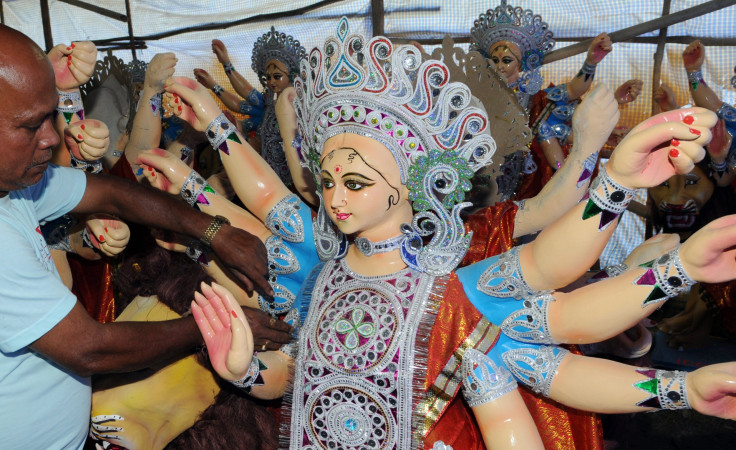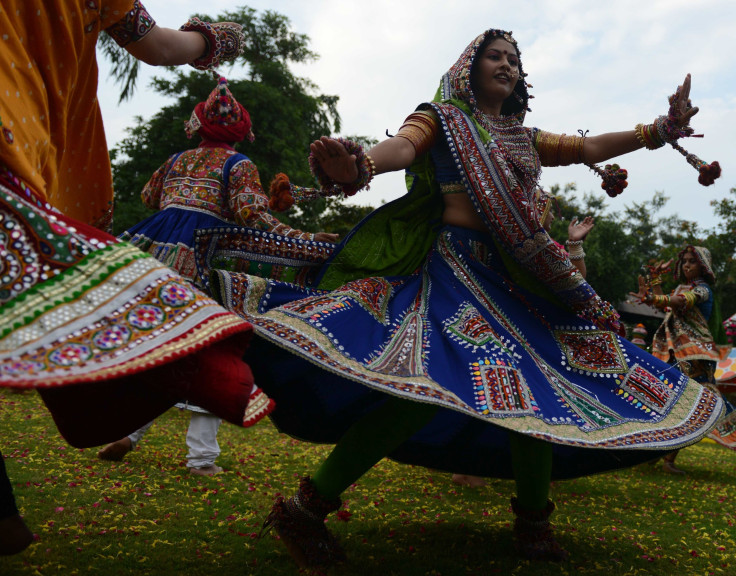What Is Navratri 2016? Hindu 'Nine Nights' Festival Celebrates Motherhood Of God, Triumph Of Good Over Evil
Hindus will begin celebrating one of the faith's greatest festivals Saturday with the beginning of Navratri. While there are actually two markings of Navratri, literally translated as nine nights, each year, it is Sharad Navratri in the autumn that is the more significant. Here’s all you need to know:
What Is Navratri? Navratri symbolizes the triumph of good over evil and involves the worship of the three forms of Devi, or divine mother. Each of these aspects of the goddesses are adored for three days. First comes Durga, the form of the mother goddess who triumphed over the demon Mahishasura after a battle lasting nine days and who wipes away negativity. The next three days involve the worship of Lakshmi, the goddess of wealth, fortune and prosperity, before moving onto Saraswati, the goddess of knowledge. After the nine nights are completed, the tenth day is known as Dasara, the day of victory.

How is Navratri celebrated? Fasting is the most common form of marking Navratri and is the way to invoke Shakti, the divine female energy, in order to cleanse the body and mind. Food is not avoided completely, but grains, such as rice, as well as meat, eggs, lentil, legumes, coffee, alcohol and onion and garlic are forbidden. Fasting is not the only aspect of the festival. Dancing also plays a big part, particularly in Mumbai, with the dance of Garba performed specifically during Navratri. Traditionally it involves performers in outfits full of color circling an image of Durga. Along with dancing, the evenings also involve feasts that bring together whole communities.

When is Navratri celebrated? The dates of Navratri are decided by the lunar calendar. In Spring, Vasanta Navratri marks the start of summer, as well as the start of the new year according to the Hindu mythological calendar, while Sharad Navratri is timed to mark the onset of winter. The alterations in climate and nature brought on by the seasonal changes mean it is seen as the ideal time to thank the divine power for maintaining the balance in the universe along with providing enough strength to the body in order to maintain their equilibrium. Navratri is not always nine days in length. Indeed, this year, for the first time since 2000, it will last for 10 days due to the first day of Navratri being spread over two days due to the lunar calendar.
© Copyright IBTimes 2024. All rights reserved.





















